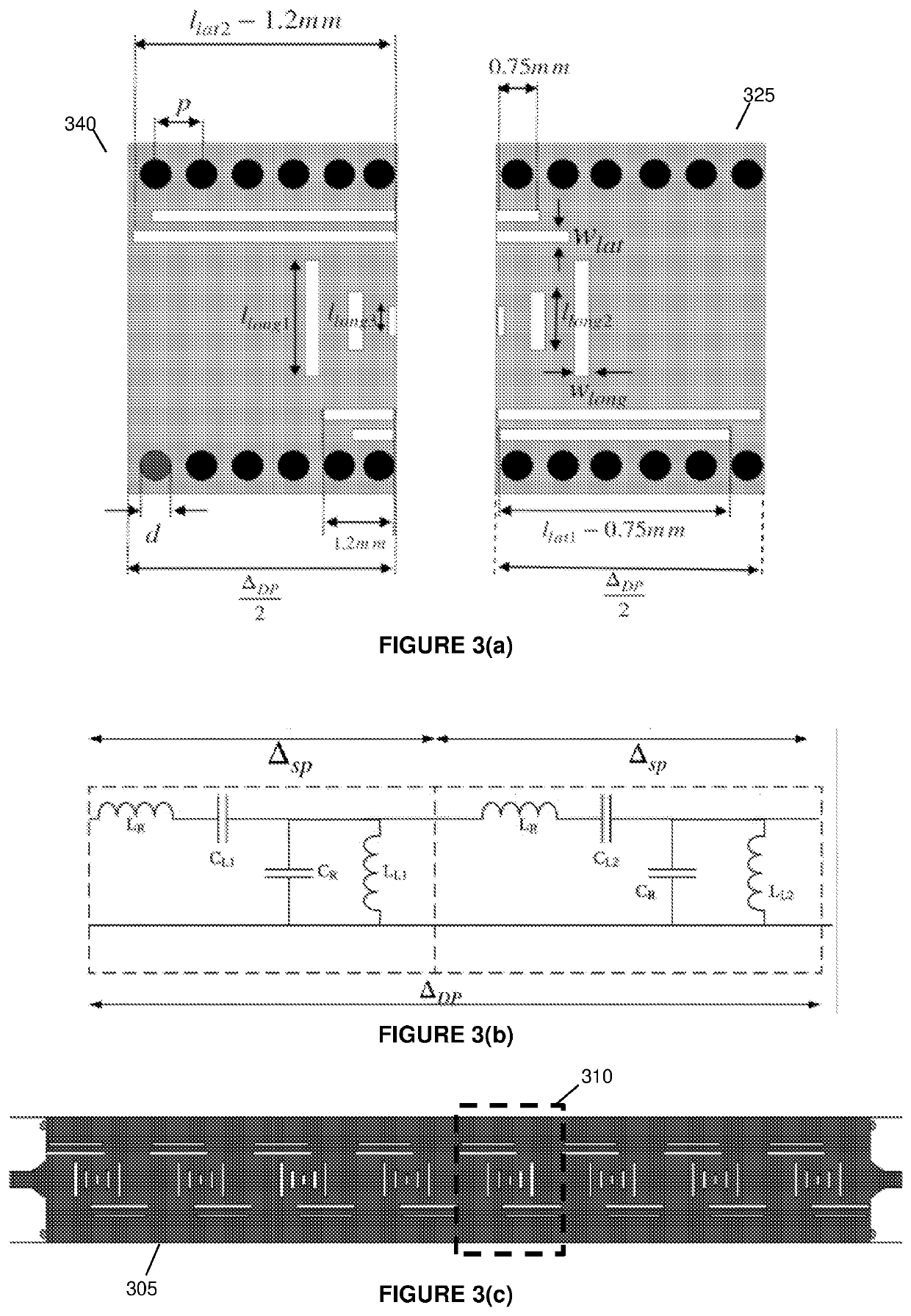Radar sensor
- Summary
- Abstract
- Description
- Claims
- Application Information
AI Technical Summary
Benefits of technology
Problems solved by technology
Method used
Image
Examples
Embodiment Construction
[0066]This invention relates to a radar sensor and a method for using the radar sensor for detecting nearby objects and in embodiments of the invention, the radar sensor may be used for dynamic gesture recognition and one skilled in the art will recognize that the radar sensor may be used for other similar applications without departing from this invention. In particular, the radar sensor comprises a pair of continuous wave (CW) radar transceivers that each has a leaky wave antenna that are provided adjacent to each other.
[0067]In a more particular embodiment, each CW radar transceiver in the radar sensor comprises a voltage-controlled oscillator (VCO), a divider circuit, a double periodic composite right / left hand (CRLH) substrate integrated waveguide (SIW) leaky wave antenna, and a six-port interferometer whereby the double periodic CRLH SIW leaky wave antenna of the first CW radar transceiver is positioned adjacent the double periodic CRLH SIW leaky wave antenna of the second CW ...
PUM
 Login to View More
Login to View More Abstract
Description
Claims
Application Information
 Login to View More
Login to View More - R&D
- Intellectual Property
- Life Sciences
- Materials
- Tech Scout
- Unparalleled Data Quality
- Higher Quality Content
- 60% Fewer Hallucinations
Browse by: Latest US Patents, China's latest patents, Technical Efficacy Thesaurus, Application Domain, Technology Topic, Popular Technical Reports.
© 2025 PatSnap. All rights reserved.Legal|Privacy policy|Modern Slavery Act Transparency Statement|Sitemap|About US| Contact US: help@patsnap.com



